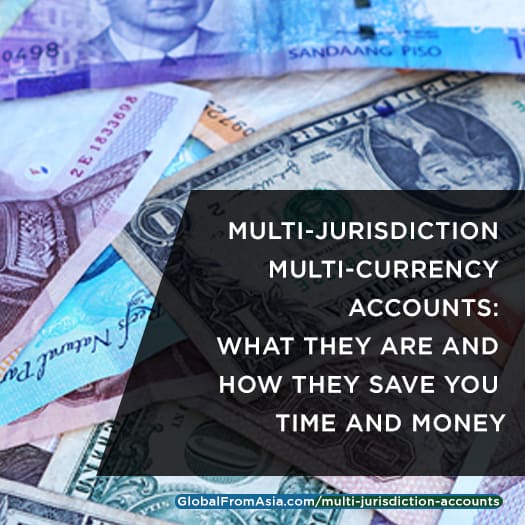
We are glad to have our partners share valuable inputs on business solutions that can support small entrepreneurs in taking their businesses global. Here’s Neat bringing a new perspective on multi-currency accounts.
If you’re looking to expand cross border, or already work with multiple currencies, you’ve likely looked into getting a multi-currency account for your business.
While most banks offer multi-currency accounts, they’re usually offering the ability to hold multiple currencies (e.g. USD & HKD) in their jurisdiction, for example, Hong Kong.
Multi-jurisdiction multi-currency accounts, on the other hand, can hold currencies in multiple countries so you can truly pay and receive money like a local. In this example, that means having a multi-currency account that holds USD in the United States and HKD in Hong Kong.
So what’s the difference between the two and why does it matter to you as an entrepreneur?
In this blog post, we’re going to explore why the second option, multi-jurisdiction multi-currency account, makes more sense for cross border traders who want to expand internationally.
1. You get local payment instructions to accept payments or payouts like a local.
The biggest difference with having a multi-jurisdiction multi-currency account is that it allows you to make and receive payments like the locals. For any transaction done in that currency, you get local payment instructions.
For example, perhaps you may have a lot of customers in Europe who pay you in euros. If you have a multi-currency account that gives you a EUR account in Europe, you can give your customers local payment instructions – meaning they can pay you with the local transfer method they’re familiar with, instead of arranging an international transfer to Asia.
If you work in eCommerce, being able to provide local payment instructions can open doors to sell in more local marketplaces or eCommerce platforms like Amazon Europe that may not support making payouts to Hong Kong or China.
2. You don’t have to wait for international transfers to arrive

Transferring funds cross border is rarely ever as quick as performing a local transfer. With a multi-jurisdiction multi-currency account, however, payments are processed as a local transfer.
Your customers based in other countries can make local transfers to your account there.
When you’re running your own business, you’re moving quickly. You don’t have time to keep checking in to see if that large payment you’re waiting for has finally arrived in your account.
Using a multi-currency account that gives you an account located in the same jurisdiction as your customer means that you no longer have to wait for days for your payments to go through.
3. You don’t have to pay international transfer fees.
Having local payment instructions also means avoiding fees associated with international transfers.
Even if, for example, you had a regular multi-currency account set up in Hong Kong, which lets you accept euros without converting them first, you’re still going to pay for the international transfer fees and charges from the SWIFT network for sending those funds cross border from Europe to Hong Kong.
This could include a variety of charges:
- Transfer fees from the sending bank
- Handling fees from intermediary banks
- Transfer fees from the recipient bank
By having a multi-currency account that not only gives you a EUR account but one located in Europe, your transactions are no longer subject to international charges.
4. You don’t lose funds in currency conversion
Perhaps one of the most fundamental reasons entrepreneurs choose to open multi-currency accounts is so that currency conversion is no longer an issue.
If you have both customers and suppliers in Europe, for example, that means you’re going to be accepting and making payments in euros. If the base currency for your account is HKD only, then you’ll constantly be converting money back and forth. A multi-currency account is going to let you hold the euros you receive until you need to use them again – or until the exchange rate becomes more favourable.
5. Everything is managed in one place
While a multi-jurisdiction account may give you funds in multiple currencies and multiple countries, at the end of the day, it’s all managed in one place. This is the advantage of having one multi-currency account rather than a series of local accounts in different countries with different banks.
When all your finances are managed from one dashboard, you:
- Simplify your end-of-month accounting process, when all your transactions records are found in the same place and formatted in the same way
- Have more clarity into the state of your overall finances, in every currency you own, at a glance
- Establish streamlined processes for managing your money in one system, instead of doing things slightly differently with multiple banking systems
The multi-currency option for international entrepreneurs
For businesses who have frequent transactions in other currencies (or expect to in the future) a multi-jurisdiction multi-currency account is the way to go.
Having the ability to send and receive payments as a local in a variety of places is going to save you a lot of time and money. The fact that it’s one account that unlocks so many currencies makes it a smart move for entrepreneurs eyeing the world stage.
Related Post: The Story of Neat HK podcast
Neat is a modern alternative to banks, offering multi-currency accounts that support HKD, USD, EUR & GBP for businesses. To learn more about Neat, visit their website here! You can also read our review on Neat here.
